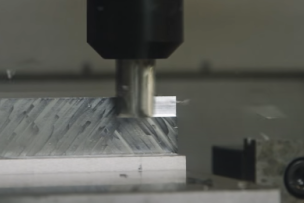Walter AG is one of the world's leading metalworking companies. As provider of specialized machining solutions, Walter offers a wide range of precision tools for milling, turning, drilling and threading applications. Walter works together with its customers to develop custom solutions for fully machining components for use in the aviation and aerospace industries, as well as automotive, energy, and general engineering. The company demonstrates its Engineering Kompetenz at every stage of the machining process. As an innovative partner capable of creating digital process solutions for optimal efficiency, Walter is pioneering Industry 4.0 throughout the machining industry.
Dynamic milling is a strategy that is becoming more and more popular due to its improved material removal rate while still maintaining process security compared to traditional milling strategies. Incorporating two different machining strategies creates the concept and allows advantages not realized before.
Radial chip thinning is the first strategy exploited in dynamic milling. This is the phenomenon of creating a smaller chip by engaging a small percentage of the tool diameter (less than half). When less than half the tool diameter is engaged in the cut, the average chip thickness is less than the advance per tooth. Ten to 20 percent radial engagement of the tool diameter results in a significant reduction in average chip thickness, and we need to be aware of this.

that is smaller than the actual advance per tooth.
The average chip thickness should still meet the tool manufacturer’s recommendation for chip load. If it doesn’t, then we are not maximizing the tool’s capability. This can also result in the chip not being physically large enough to hold the heat produced by the cutting operation.
A small chip has less capability to hold heat which results in either the tool or the workpiece absorbing this latent heat, which is undesirable. Feeding the tool faster is the solution to preventing excessive radial chip thinning, which is a nice “solution” to incorporate.









Talk to Us!
wanting more info on Dynamic machining, is there any type of traning offered ?
33Hi Joey,
You can check out these videos offered on Walter's site:
https://www.walter-tools.com/en-us/search/pages/default.aspx/videos?k=dy...
Hope this helps!
25Leave a reply
Your email address will not be published. Required fields are marked *